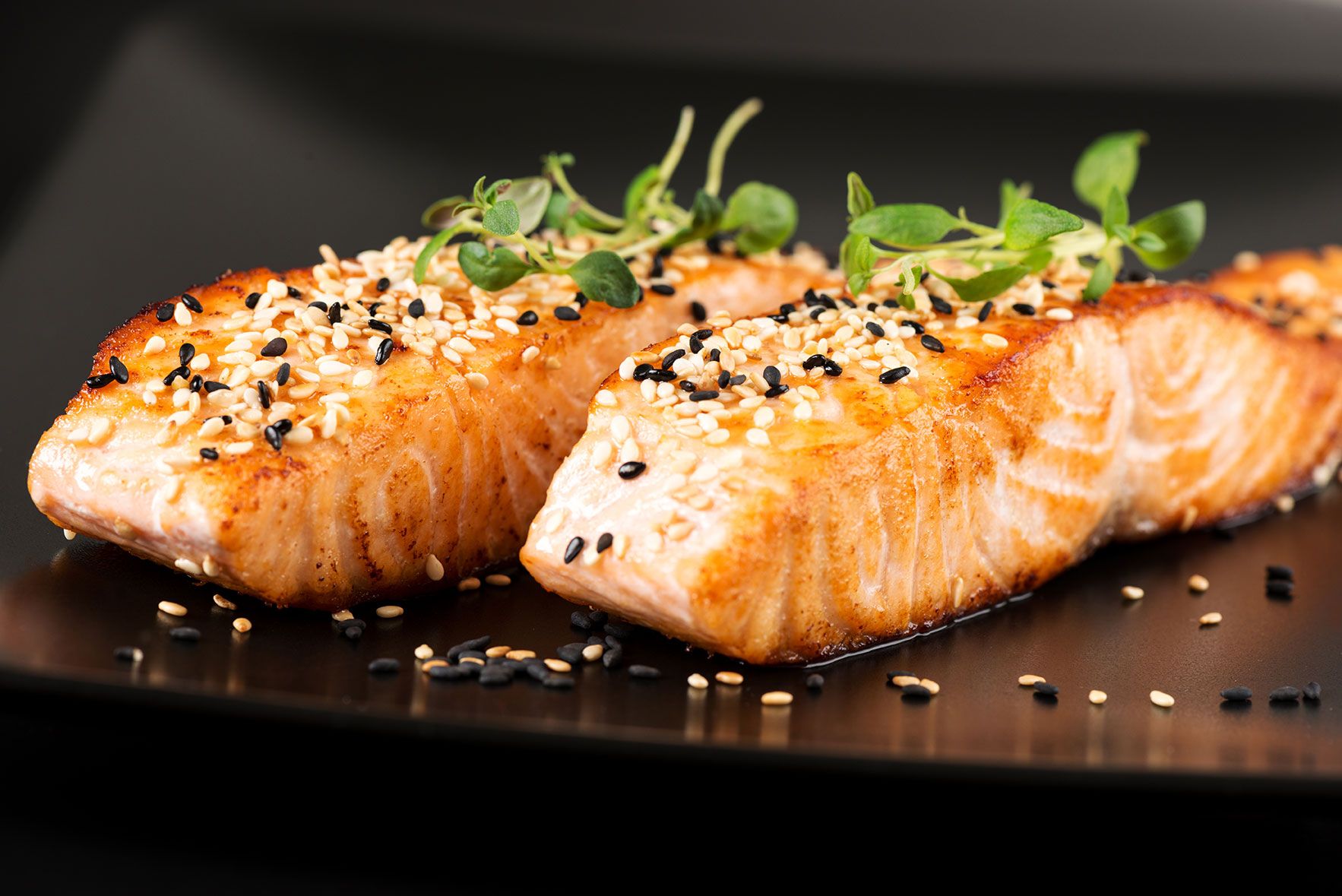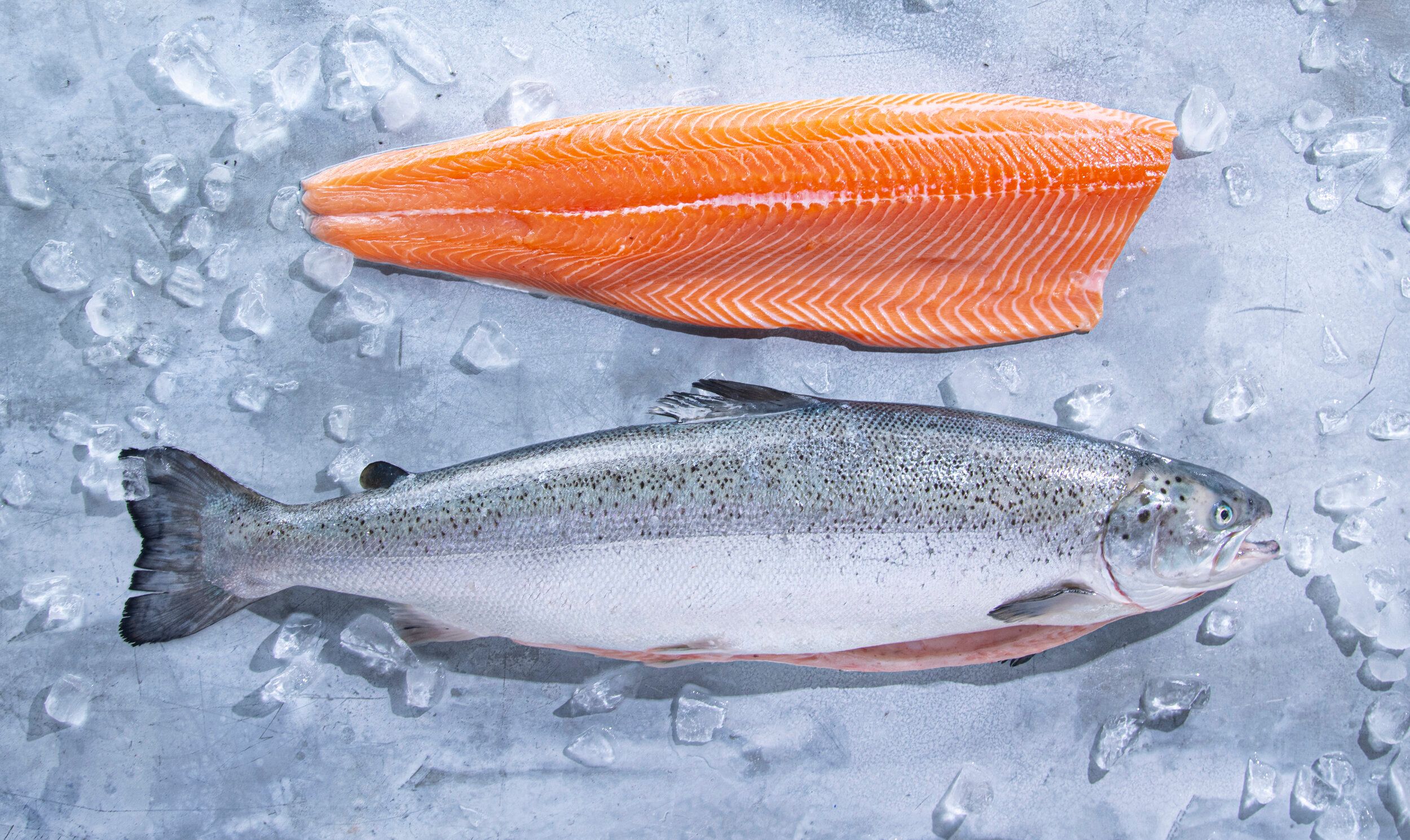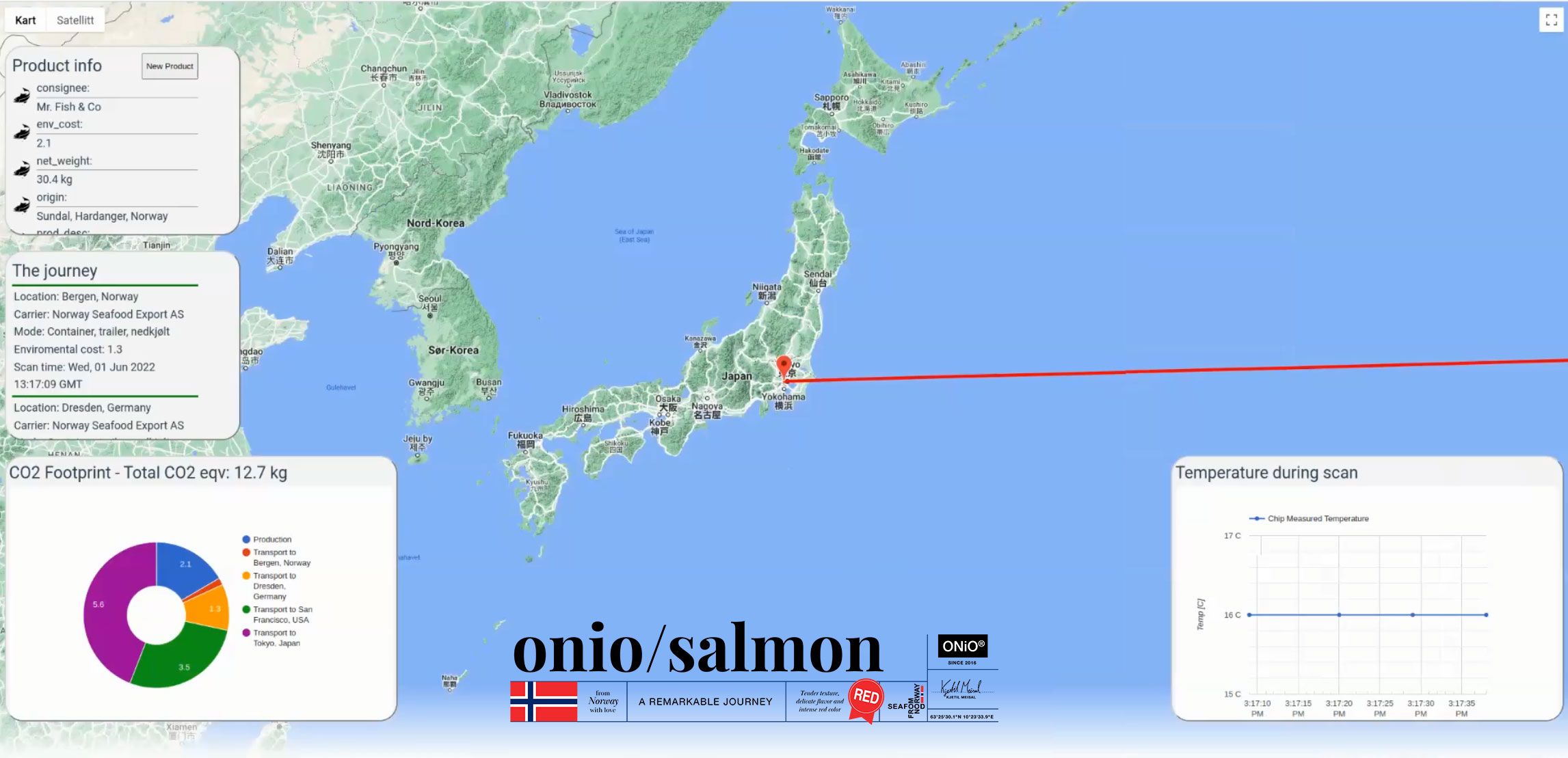Blockchain Asset Tracking of Norwegian Salmon: Keeping Food Safe and Secure


Did you know that one in ten people get sick every year from eating contaminated food? In the United States, that amounts to about 48 million people. Of these 48 million, 128,000 are hospitalized, and about 3000 meet a fatal end. These numbers are staggering, and they underscore the importance of keeping our food supply safe and secure. As such, we live in perilous times where the quality of the food we eat is dubious at best. Thanks to modern technology, today we have a number of savvy ways to monitor and control the quality of what goes into us - One way is through blockchain asset tracking. In this article, we’ll look at how Blockchain is being used to track Norwegian salmon and ensure that they are as safe as can be when they end up on our plates.
Poor health surely makes for some of the worst possible human experience - nothing can quite affect the quality of our lives like disease can. Disease though is inevitable - not even the most painfully optimistic among us can refute that cruel dictum of nature - However, poor health shouldn’t be a perpetual reality in our lives. The food we eat, at any rate, shouldn’t be making us sick. So many of today’s prevalent health challenges, such as obesity and diabetes are due to the atrocious food choices we make. Hey, but those are our choices - we like our donuts and that’s fair enough - but, when it’s not our food choices but the way our food is sourced that’s killing us, we have a problem. Today however, due in most part to the disjointed nature of our globalised world, we are more cut off than ever from the sources of our food. For thousands of years we have been eating what we grow or raise in our vicinity. For practical reasons, that might not be possible for most of us today. However, as a technologically advanced civilisation, access to healthy food should surely rank extremely high on our list of priorities? After all, isn’t the availability of good food the primordial human problem? All our wars were pretty much fought, in essence, for more land - i.e access to nourishment. It is nothing short of a travesty then that even after all this progress and wealth creation, we can’t take for granted this essential, life-making requirement - in fact, more than ever before, contaminated food is killing a ridiculous number of people. Even in the developed world, we still lose an unacceptable number of people every year to this entirely avoidable cause. In addition to this egregious loss of life, foodborne illnesses also take a massive toll on the economy - healthcare costs, lost productivity and population loss cumulatively add up to billions of dollars of losses. So obviously, we have to stand up and do something about this - it is pretty much imperative that we find ways to ensure that.
What is Blockchain?
Before we get into how Blockchain can be used for asset tracking, let's first take a step back and understand what Blockchain is.
Boiled down to its essence, a blockchain is a decentralized database. This means that there is no central authority that controls the data. Instead, the data is distributed across a network of computers (also known as nodes). Each node in the network has a copy of the data, and all the nodes must agree on any changes made to the data. This makes it very difficult for anyone to tamper with the data. Any blockchain-based construct (think bitcoin), no matter how complex, is based on this simple idea.
Now that we have a basic understanding of Blockchain let's look at how it can be used for asset tracking.
What is asset tracking though?
Asset tracking is the process of tracking the movement of assets, such as products or raw materials, from one location to another. This information is essential for various reasons, including quality control and supply chain management. Traditionally, asset tracking has been done using paper records or barcodes. However, these methods are not very secure. They are also subject to human error. When vast amounts of data are involved, these errors add up in massive ways.
Blockchain, on the other hand, is a very secure way to track assets. As we just saw, it’s pretty much tamper-proof. Each transaction is recorded in a block, and each block is chained to the previous block. This creates a tamper-proof record of all transactions.
In addition, because Blockchain is a decentralized database, there is no single point of failure. This means that even if one node in the network goes down, the rest of the network can still function normally.
The benefits of Blockchain asset tracking
Asset tracking is a huge problem for any business - when it comes to the food business, the problem is even more severe - after all, the margin for error is very slim, almost non-existent when it comes to food - for obvious reasons as well - human lives are at stake.
So what then?
Enter blockchain asset tracking - blockchain is a distributed ledger technology that allows for transparent and secure tracking of assets. When it comes to food safety, blockchain asset tracking can be an invaluable tool for businesses and consumers alike.
So how does blockchain help in food safety?
Well, to put it simply, blockchain can be used to track items throughout the supply chain and identify contaminants at any stage.
Blockchain asset tracking provides a number of benefits for both businesses and consumers. Now imagine you own a food establishment - say, a restaurant or even a chain of fast-food joints - here’s why you’ll want to look into using blockchain technology to track your supply chain -
Blockchain can provide you with a complete record of where food items have been and when. i.e you can follow your ingredients and raw materials from the source all the way into your hands. This can go a long way in making sure you are able to perform exhaustive QC on your ingredients before serving them to your customers. This information can be used to quickly identify contamination issues and take rectifying measures at the earliest.
That’s not all though - as a business owner, blockchain can help you save money by reducing the need for manual data entry and paper records, which are far from fool-proof anyway - pretty nifty huh?

For consumers, Blockchain provides transparency and peace of mind. When you buy food that has been tracked using Blockchain, you can be sure that it has been produced safely and securely. You can also trace the produce back to its source, knowing exactly where it came from.
How Blockchain is being used to track salmon
Food contamination happens in a number of ways and more importantly, It can happen at any stage - from farming to manufacturing to packaging and distribution. That's why it's so important to have a system that can track food items throughout the supply chain and identify where contamination occurs. This way, any safety issues can be nipped in the bud and potential problems can be preemptively dealt with.
Norwegian salmon is one of the most popular types of salmon globally. In fact, Norway shipped more than 1,393,781 tonnes of Salmon in 2021. Due to its popularity, there is massive worldwide demand for the product. Supply chains are often long - extending across continents. This being the case, it is crucial to ensure that Norwegian salmon is safe for human consumption, by the time it gets on your plate, say in New York City. Blockchain is playing a significant role in ensuring this.
Fake Salmon
The salmon industry is particularly vulnerable to fraud. Salmon is a high-value commodity, and there is often a temptation to cut corners to increase profits. This means, suppliers can often resort to the use of lower quality ingredients, false labeling, and other forms of fraud.
Blockchain can help combat fraud in the salmon industry by providing a transparent and secure way to track assets. For example, blockchain-based tracking can verify the origin of salmon and ensure that it has been raised sustainably. In addition, Blockchain can track the movement of salmon throughout the supply chain, from farm to table. This would make it very difficult for fraudsters to tamper with the product.
Fraud harms consumers and damages the reputation of the salmon industry. The Norwegian Seafood Association has started using blockchain asset tracking for Norwegian salmon to combat this problem.In 2021, the country exported over €8.1 billion worth of salmon. Given the importance of the salmon industry to the Norwegian economy, it's no surprise that the country is a pioneer in using Blockchain for food tracing.
In 2016, the Norwegian Seafood Council launched a pilot program to track Norwegian salmon using blockchain technology. The project was developed in partnership with IBM and Microsoft, and it used the Hyperledger Fabric platform.
The aim of the project was to create a system that would allow consumers to trace the journey of their salmon from farm to table.
Trace your fish back to the farm
Kvarøy Arctic is a significant supplier of Norwegian farmed salmon, which has recently joined the IBM Food Trust to improve traceability and foster consumer confidence throughout its supply chain. They wanted to give corporate buyers, such as select Whole Foods Market shops in the United States and Canada, and eateries, access to a QR code that can show a provenance history for Arctic salmon and the feed it was raised on.
Blockchain is the future for ending fraud in the seafood industry. It is a level of transparency that shows our dedication to being the best of the best. The technology tracks a level of detail that helps us reduce food waste so we can feed more people in the world.
- Alf-Gøran Knutsen, CEO of Kvarøy Arctic

Buyers interested in the farms will be able to download photos and videos, allowing them to see for themselves how Kvarøy Arctic handles animal care and conditions. In the future, the firm plans to release a consumer app that will provide information on the quality and sustainability of its seafood.
This is just one example of how Blockchain is used to track food items and ensure safety. As the technology evolves, we can expect to see more and more companies using Blockchain to track their products and ensure stricter quality control.
The QR code deception
Our Norwegian salmon tale might sound like it's all roses and sunshine - but alas, nothing ever is. As is often the case with most things, there's a major but. QR codes are the most commonly used modality for food tracking. Even though blockchain technology is regarded as very trustworthy, the trustworthiness of QR codes themselves is hotly disputed. From a fraudster's standpoint, QR codes are just a piece of cake to work around - just a few additional cents in additional cost to photocopy the labels. QR stickers are completely reproducible, and the links to where they take you are readily available to everyone. Several online services allow you to generate your own code from whatever weblink you choose. As a result, a QR-based solution might even encourage counterfeiting and become more hazardous than not using one at all!
The weakest link in the chain is not blockchain or any technology; the weakest link is the piece of sticky tape that puts the label on the package.
- Craig Heraghty, agribusiness leader at PwC.
So, what can be done? We need to think like fraudsters, always discovering the simplest methods to get around supply chain tracking, in spite of sophisticated and complex technology solutions.
To address this, food retailers and blockchain firms will need to collaborate in order to devise solutions that prevent products from being tampered with before they reach store shelves.
The Shining Knight - ONiO.zero
The key is to combine the security of blockchain technology with the safety of a seal that combines both physical (hardware) and digital protection. That's precisely what is attainable with ONiO.zero.
ONiO.zero is a wireless and batteryless microcontroller with built-in sensors for temperature and tampering. Each chip has a UUID stored in a non-fungible memory (Yes, it does actually have that). This UUID is used as part of the transmission to the ledger. It's easy enough to validate that with a list of current UUIDs. The issue now is that for the tech-savvy it still would be possible to replicate this solution. To prevent that from happening - some further steps were taken. You can read about that in our whitepaper: BLOCKCHAIN BASED ASSET TRACKING USING ONiO.zero.
ONiO fish & chip - a simple demo
We created an application for tracking frozen salmon at ONiO. A crate of fish was equipped with a sensor using the ONiO.zero platform and was moved between different locations (Norway, Germany, USA, and Japan). Each receiving location could examine the case using our Bluetooth-enabled ONiO gateway and save the data in the Blockchain. This was done in accordance with the following requirements:
The video above doesn't really show in-depth how it's done. Still, it's a simple visual demonstration of a solution that provides both physical and digital protection for your asset tracking using the ONiO.zero microcontroller.

Challenges faced by the food industry
While blockchain asset tracking provides many benefits, there are some notable challenges that need to be addressed -
One of the biggest challenges is scalability. The food supply chain is vast and complex, with millions of products being transported worldwide every day. It can be challenging to track all of these items using blockchain technology.
Another challenge is data quality. For blockchain asset tracking to be effective, businesses need to input accurate and up-to-date data into the system. This can be a challenge, particularly for small businesses that may not have the resources or expertise to do this effectively.
Finally, there is the issue of cost. Blockchain technology can be expensive to implement, and it may not be feasible for all businesses in the food industry.
Summary
Blockchain asset tracking is a very promising new vista that Iot technology is offering us. Yes, there are some challenges that stand in the way of immediate implementation on a large scale, but in spite of these challenges, blockchain asset tracking has the potential to transform the food industry. The value-adds it promises are pretty hard to ignore - cost savings, transparency, traceability and as a result, improved food safety and fewer lives lost to food contamination.












